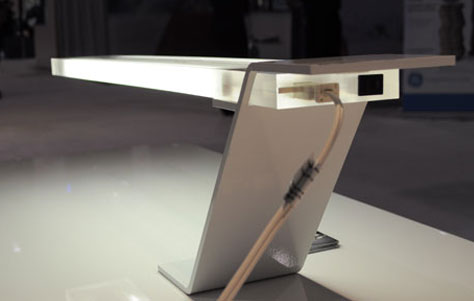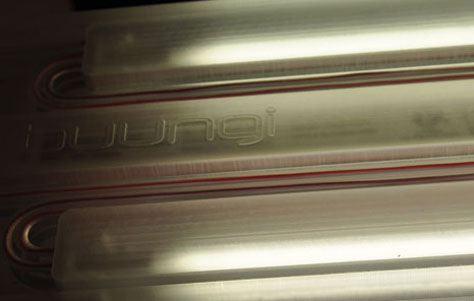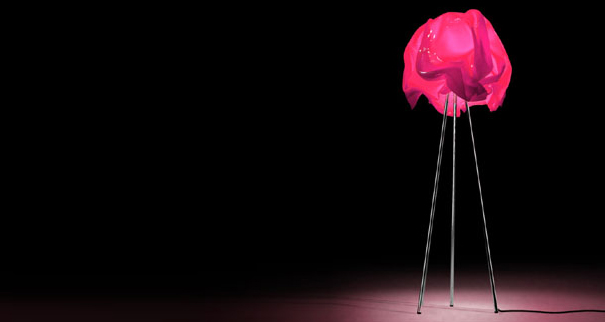Canitlevered Steel Meets Transparent Acrylic in Buungi’s Task Light
If you still harbor the all too common (mis)impression that the best use for acrylic is as the prime component in those ubiquitous 80s artificial nails, have a look at Buungi, the Toronto-based design/build consortium that “re-imagines everyday materials and plays with scale and function to make creative and multifunctional furniture that adapts and responds to users.” I know I’m not alone in expressing a silent “hallelujah” at the prospect, not to mention the re-invention of this common thermoplastic formerly known for ice hockey spectator protection shields and Motorcycle helmet visors into the central attraction of the Light Balance Task Light.
Light Balance. Designed by Buungi.
Light Balance is crafted from solid acrylic and a ¼” plate of powder-coated steel with a flat base and angled stem (at 135 degrees, it supports the weight of the light module as well as expresses the streamlined beauty of cantilevered construction). The “light bar” is a shell (or solid skin) of acrylic that contains all the elements for effervescent illumination—two 12 watt fluorescent linear bulbs, wiring, and ballast to achieve equilibrium.



The structural strategy of Light Balance aligns it with a couple of past 3rings favorites. Both Myto and the Domino Coffee Table employ a cantilevered design to accomplish more with less, to achieve structural stability with minimal resource use, and, of course, to achieve a distinctive aesthetic. While I’m accustomed to associating cantilevered construction with larger products (a backyard deck, for instance), the gradual miniaturization of the technique suggests its widespread applicability. And I, for one, am glad to see it. Light Balance is Buungi’s ideal poster child: the sleek and forward-looking task light is the manufacturer’s proof in the pudding, aptly showcasing their innovations in traditional materials as well as their re-invention of scale and function.




Leave a Reply